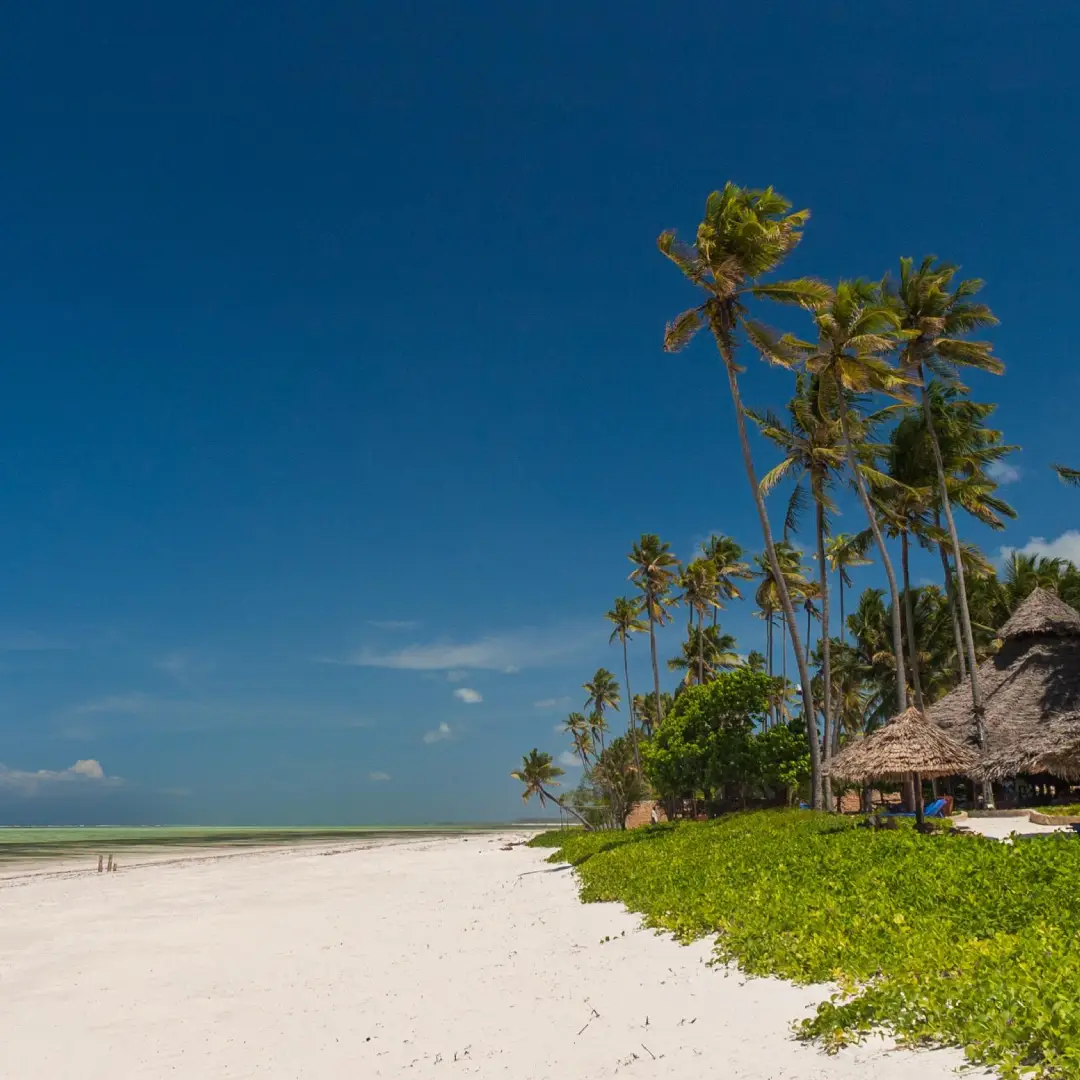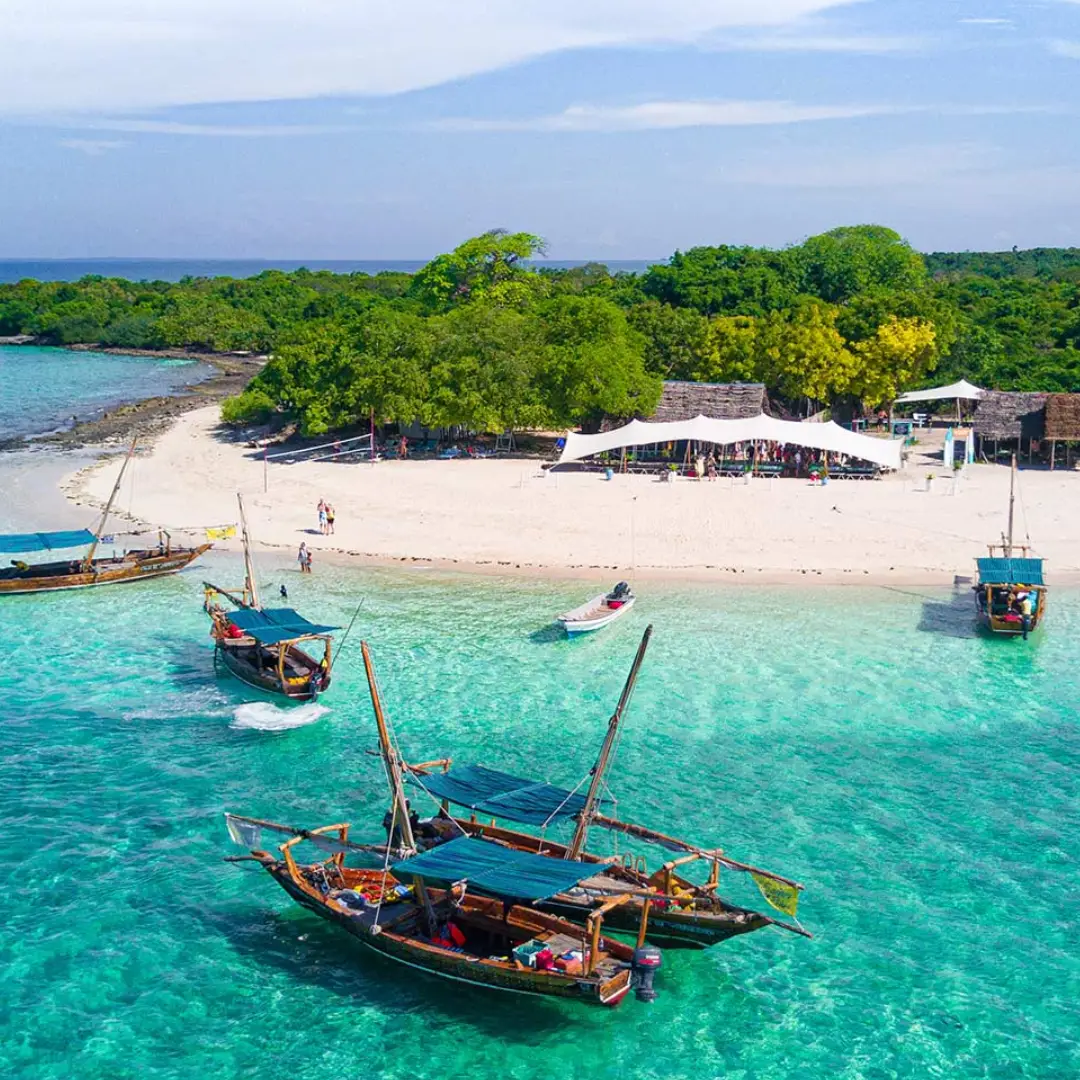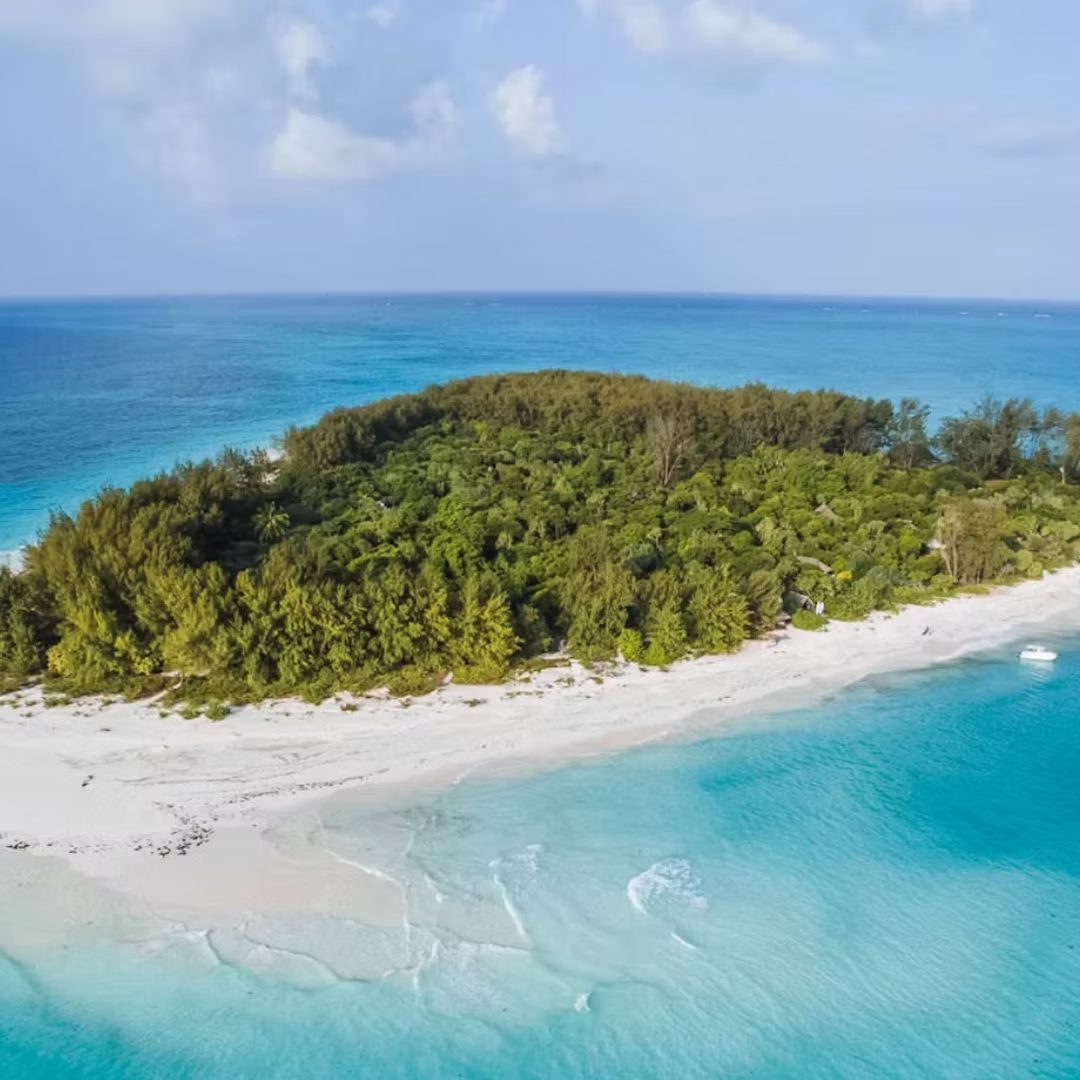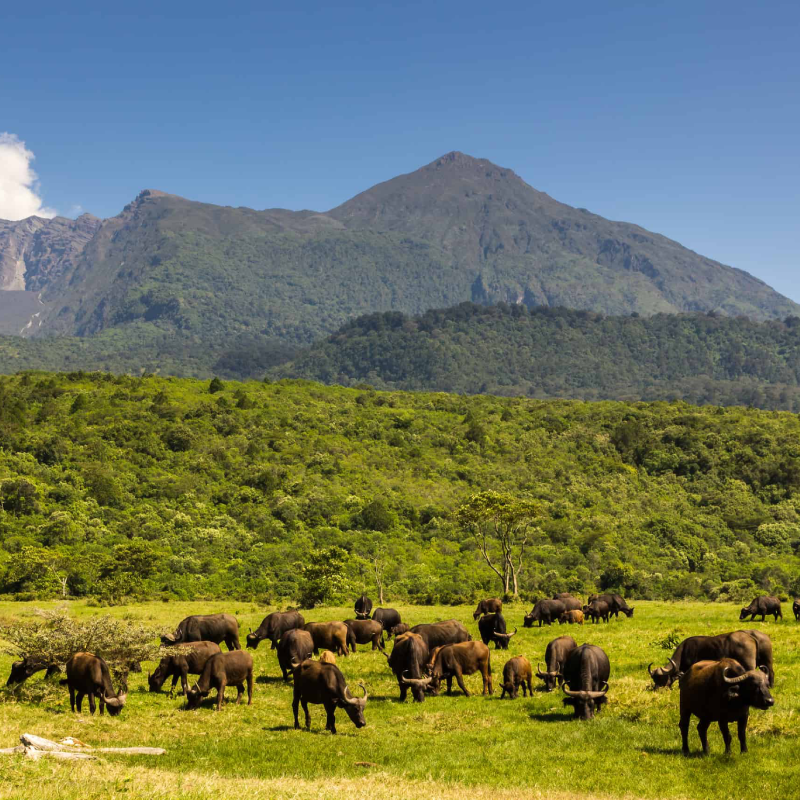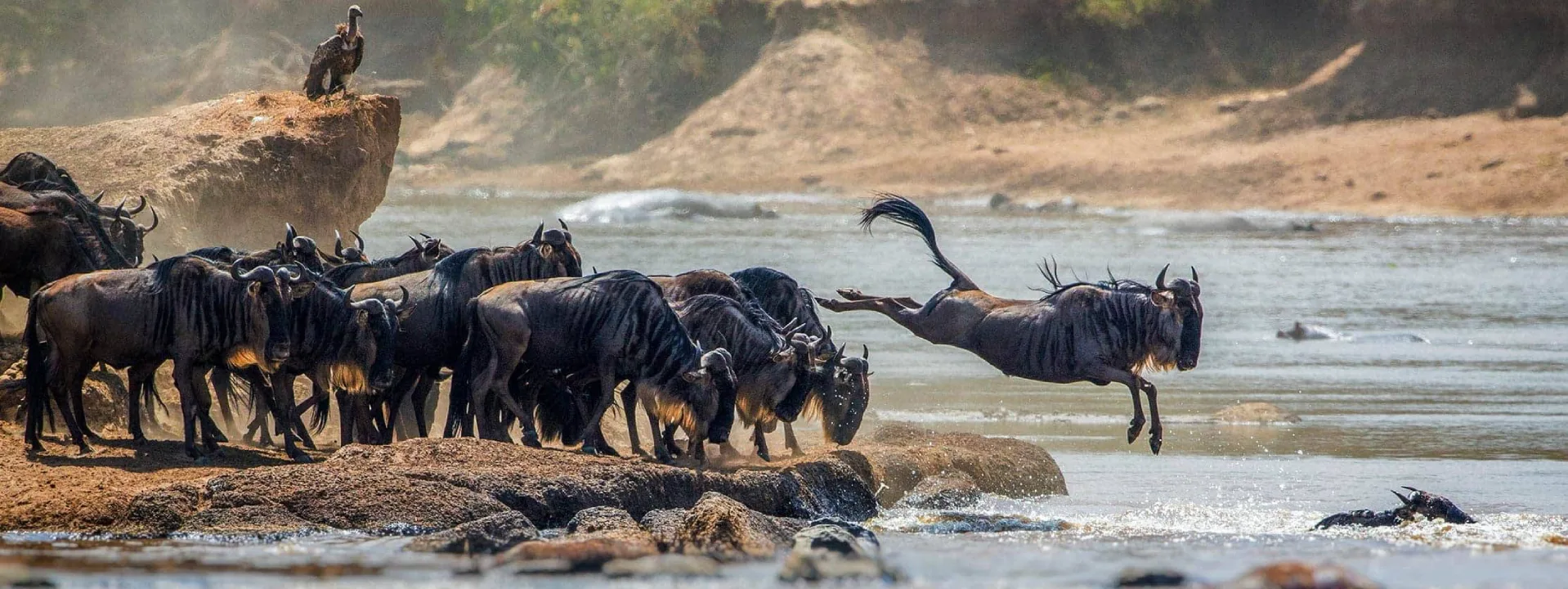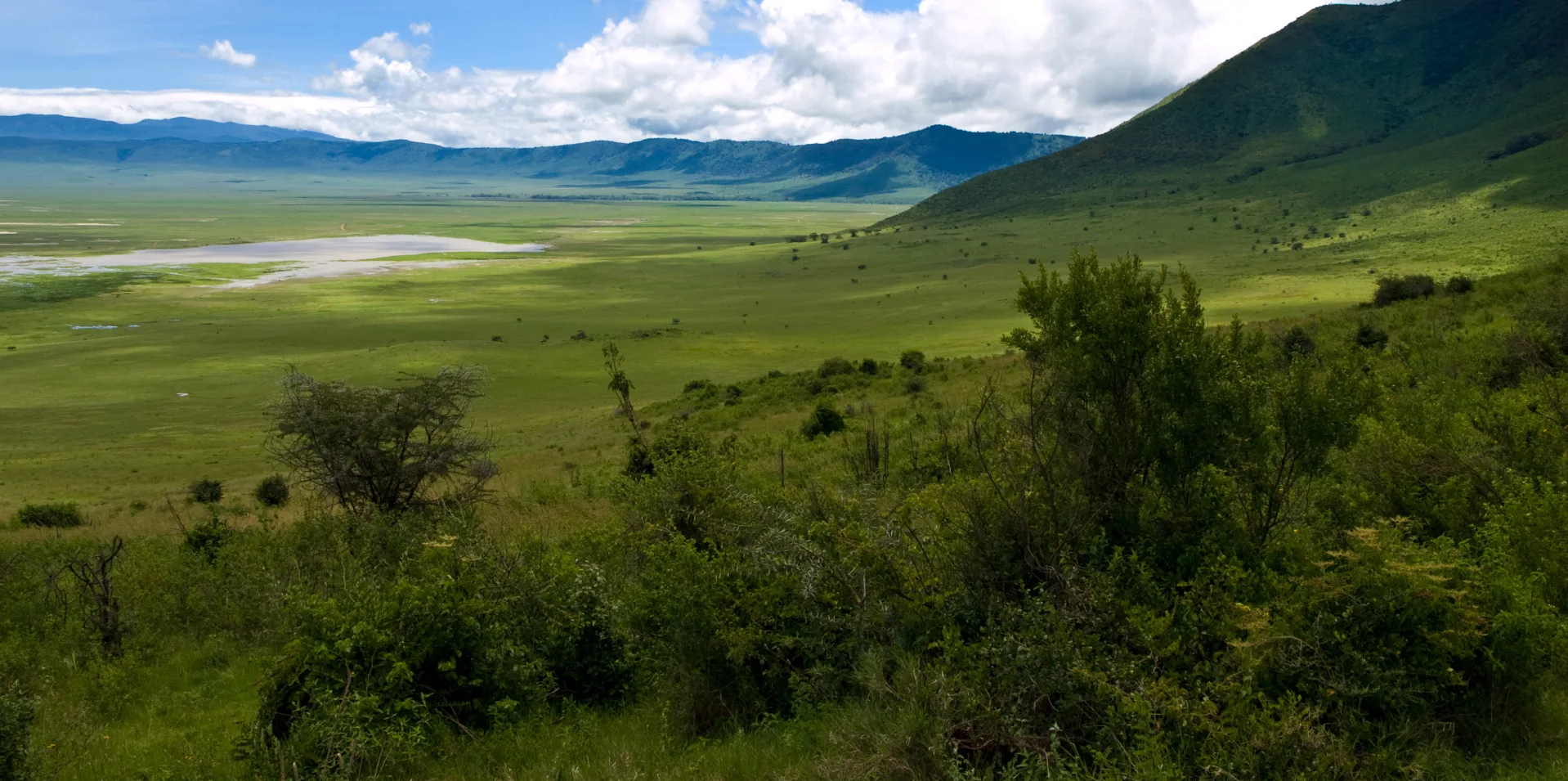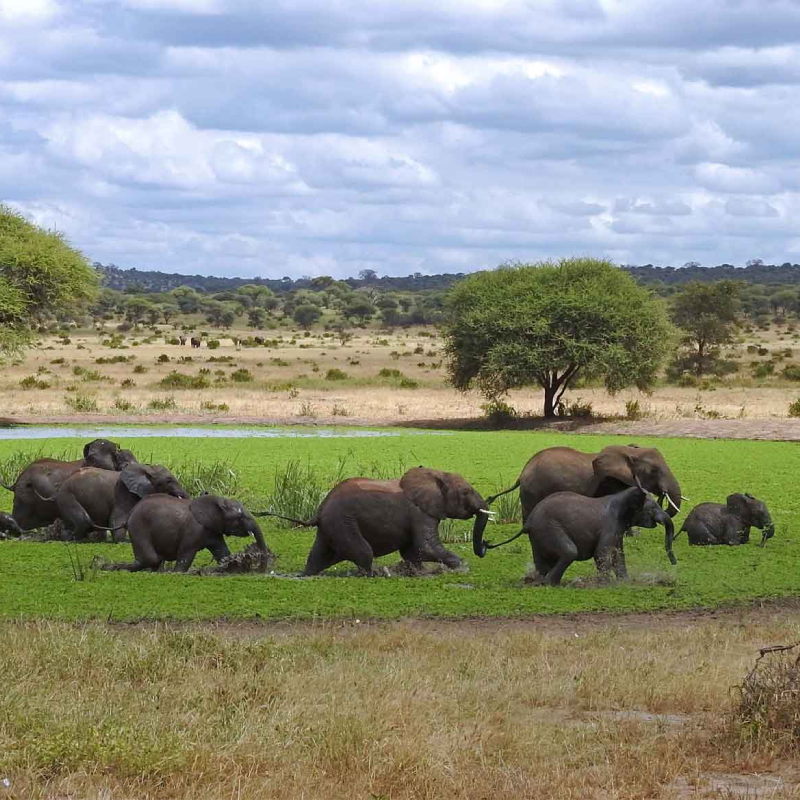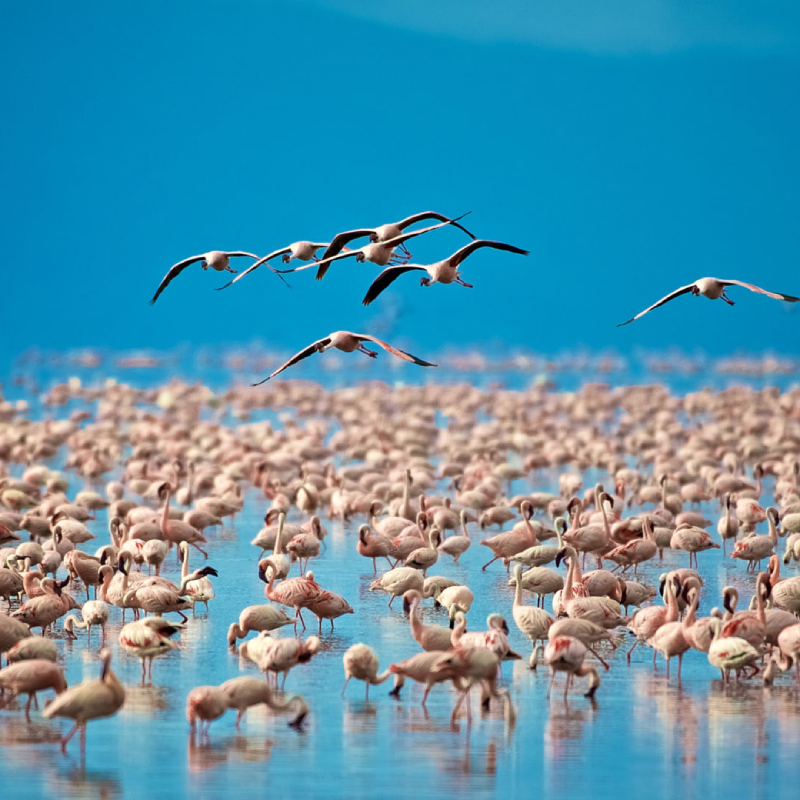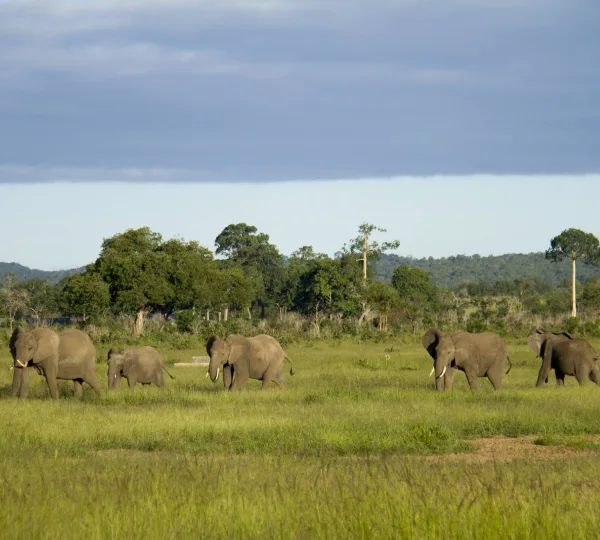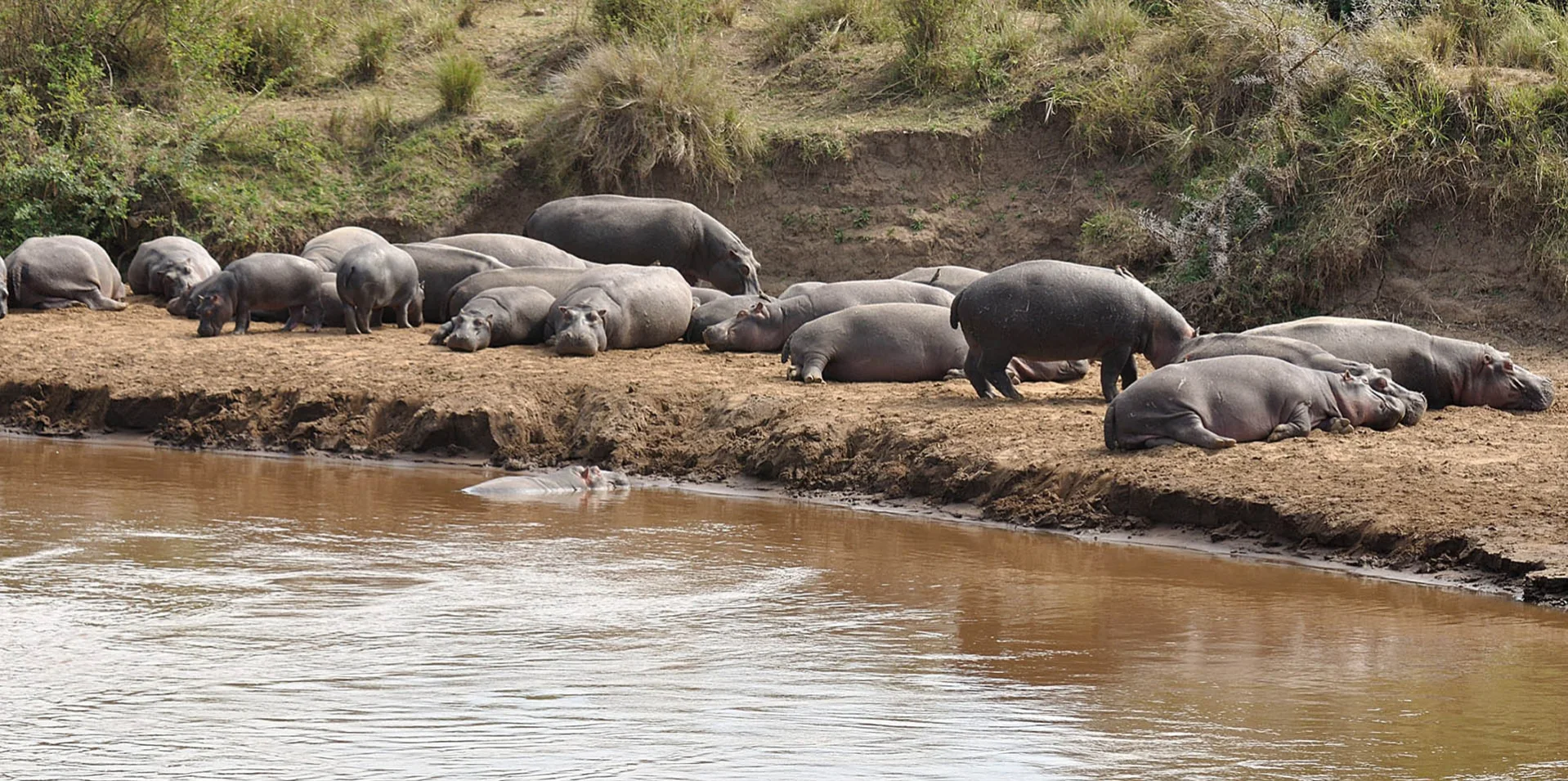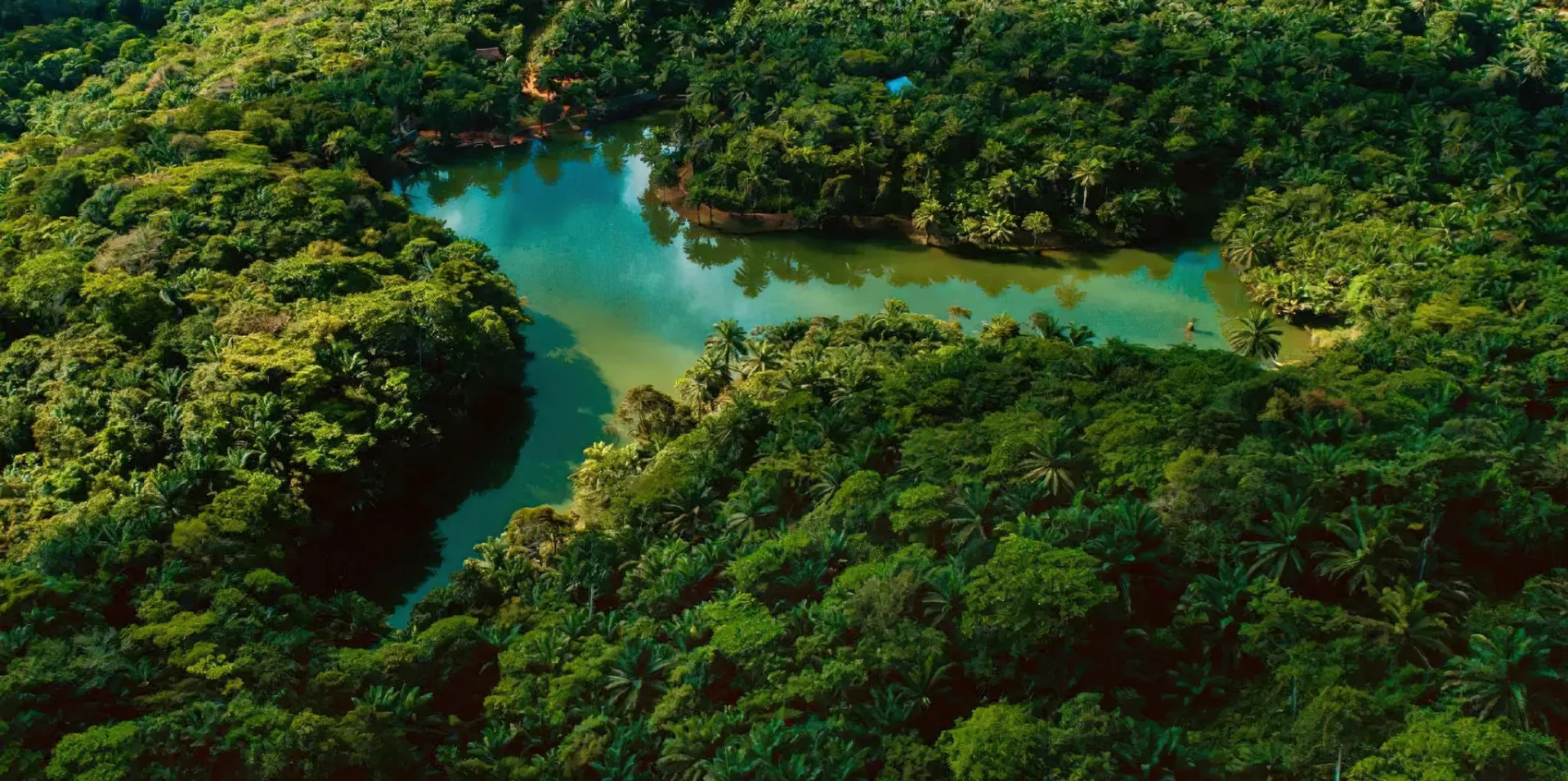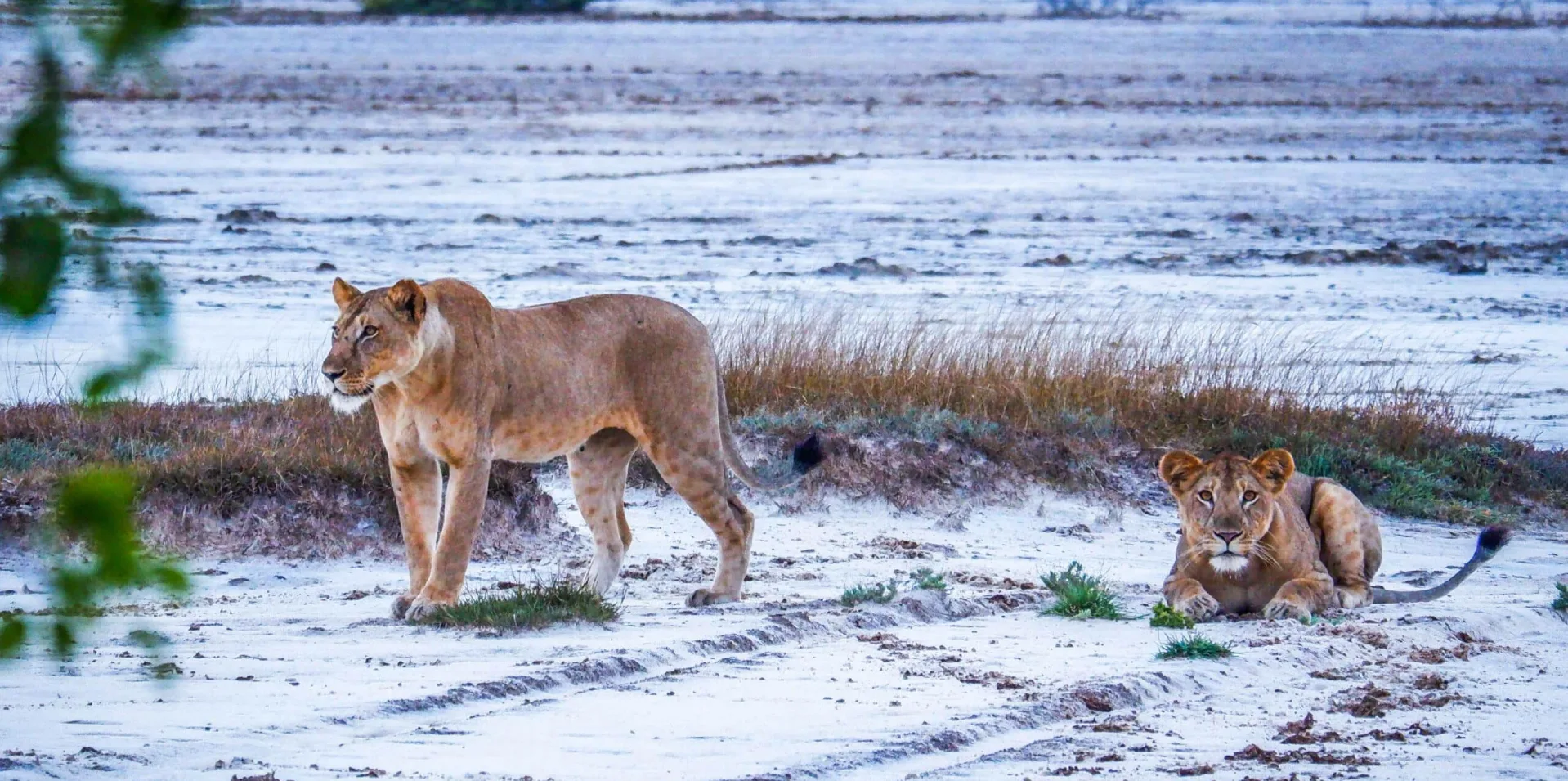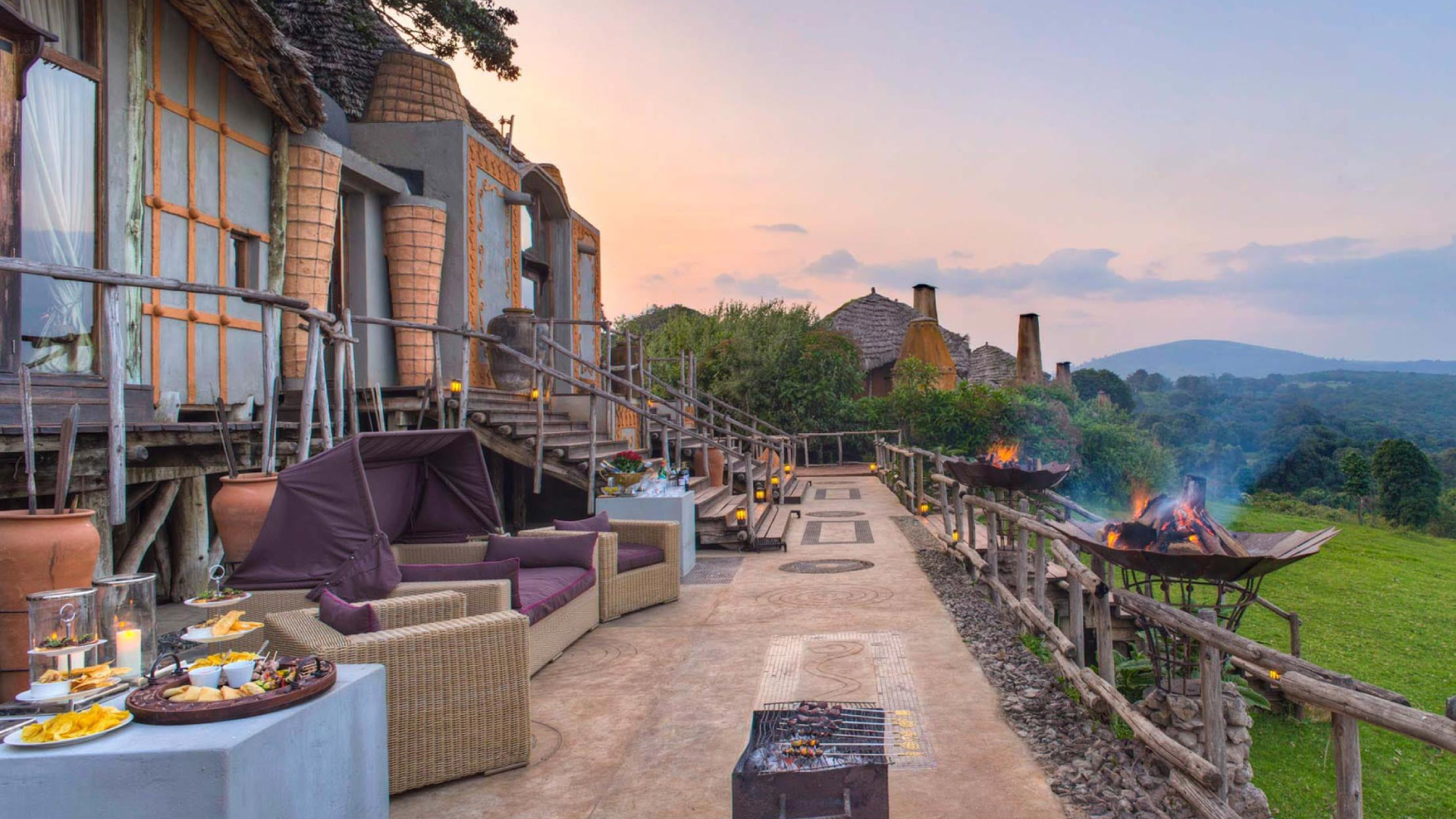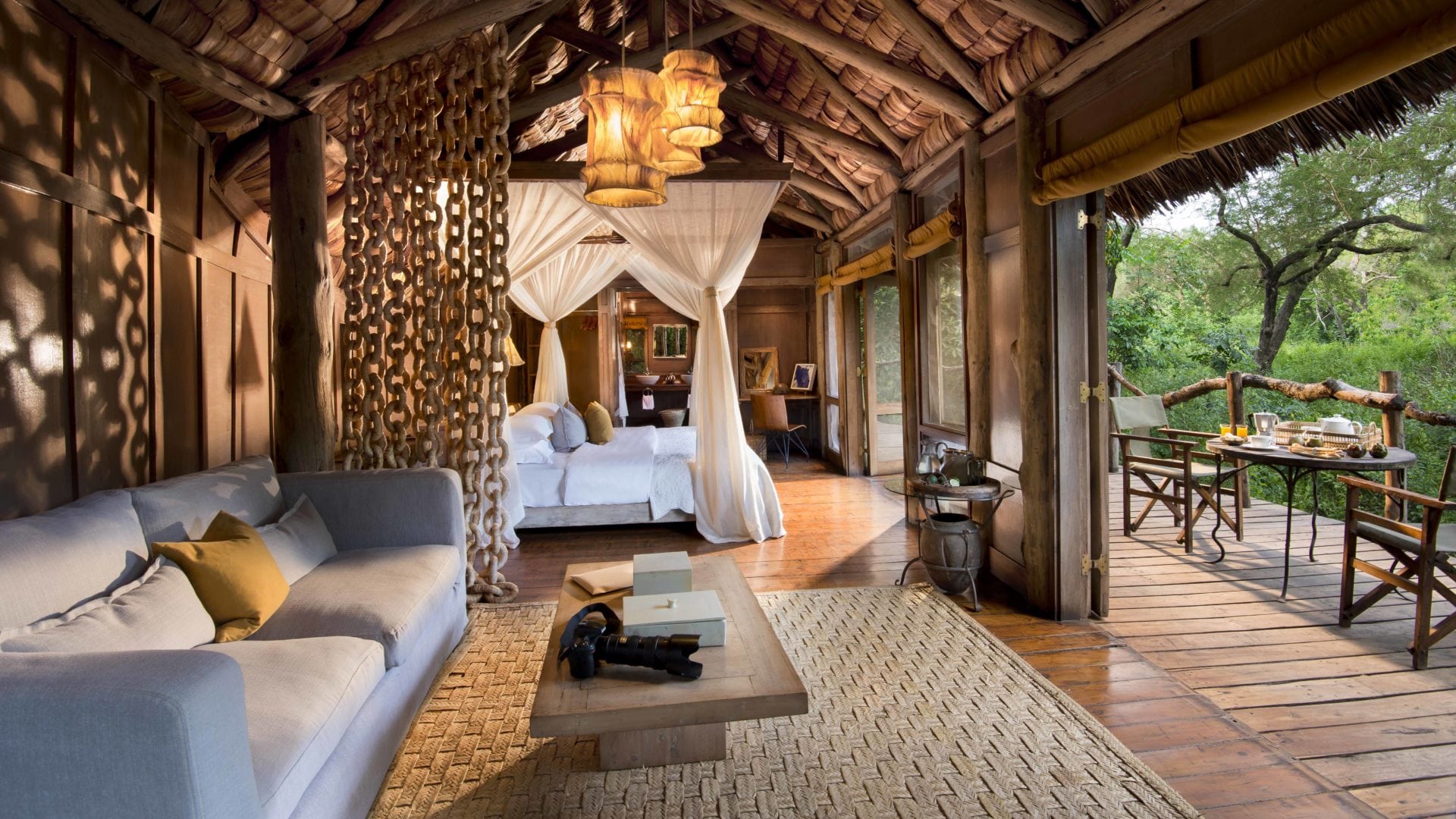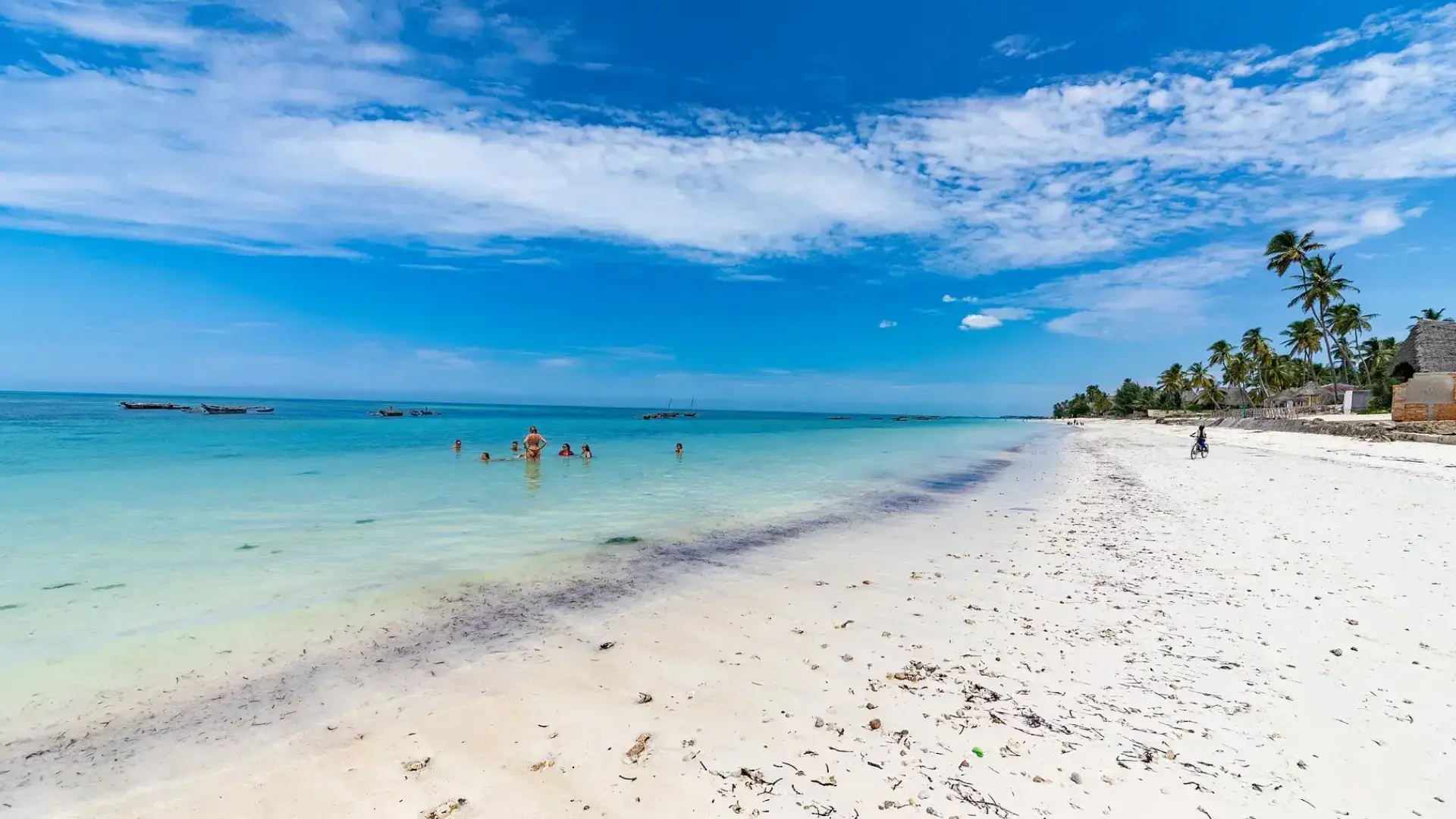Serengeti National Park
Famous for its spectacular animal migrations and stunning scenery, Serengeti National Park is a must-visit wildlife destination in Africa. This World Heritage Site, which spans around 1.5 million hectares, is well-known as a location for the Great Migration, in which millions of zebras and wildebeests travel across the plains in quest of new places to graze.
Lions, elephants, and cheetahs are just a few of the many animals that call the park’s many ecosystems home. Some of the varying landscapes across Serengeti include expansive savannahs, woodlands, and riverine forests.
Wildlife viewing is popular all year round in the southern plains close to Seronera, but during certain migration seasons, visitors can enjoy something truly special in the Western Corridor and the Mara River areas. Visitors from all over the world flock to Serengeti National Park every year to see the migration and marvel at the park’s abundant wildlife.
Best Time to Visit
The Best Time to Visit Serengeti National Park largely depends on what you want to experience. Wildlife viewing is good throughout the year, but if you’re keen on witnessing the Great Migration, plan your trip between January and October.
The calving season occurs around January to February in the Ndutu area, while June and July are ideal for viewing the migration in the Western Corridor. August and September are perfect for witnessing the dramatic Mara River crossings.
However, be mindful that this period can attract larger crowds. For a quieter experience, consider visiting during the shoulder seasons when fewer tourists are present.
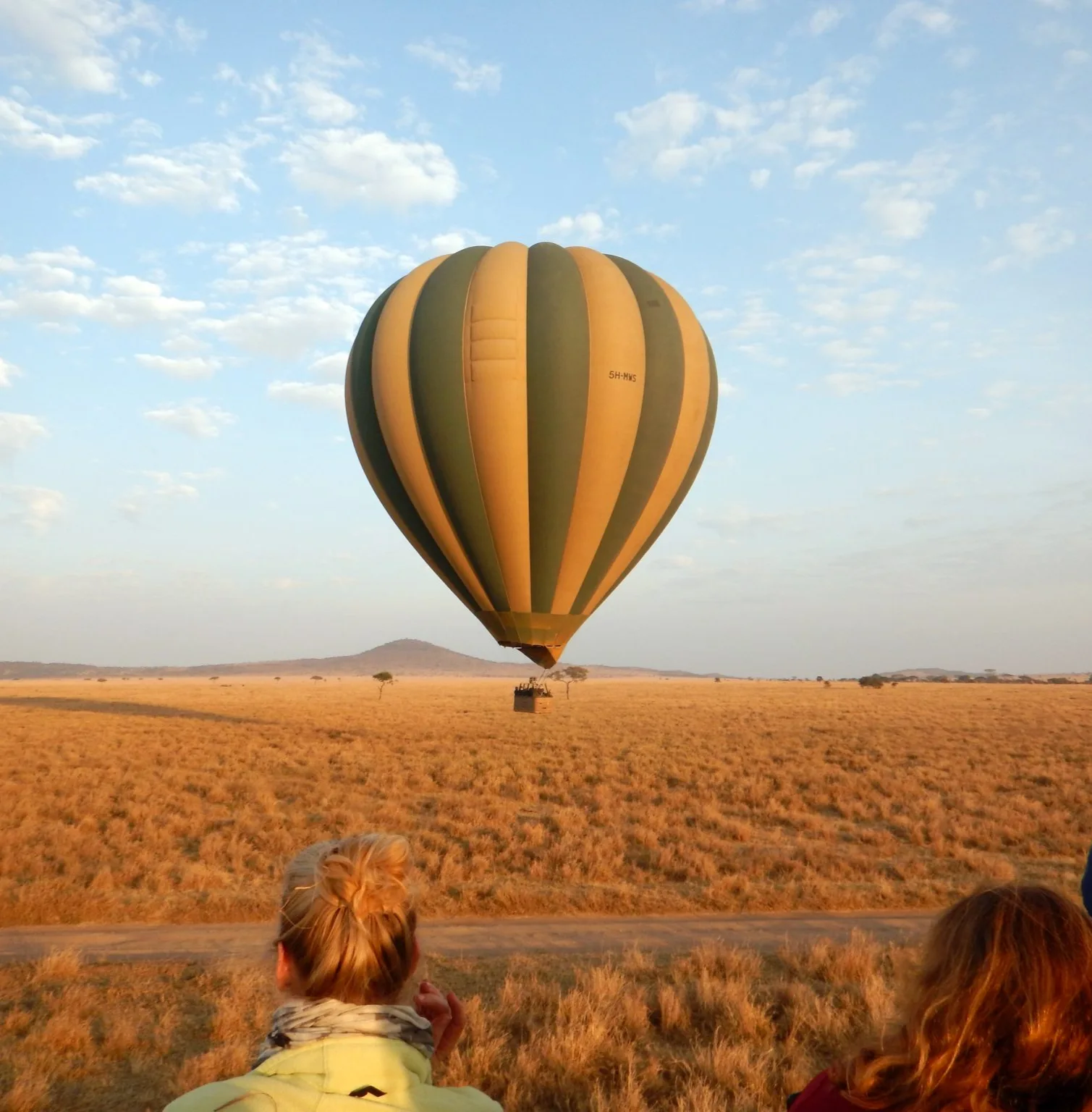


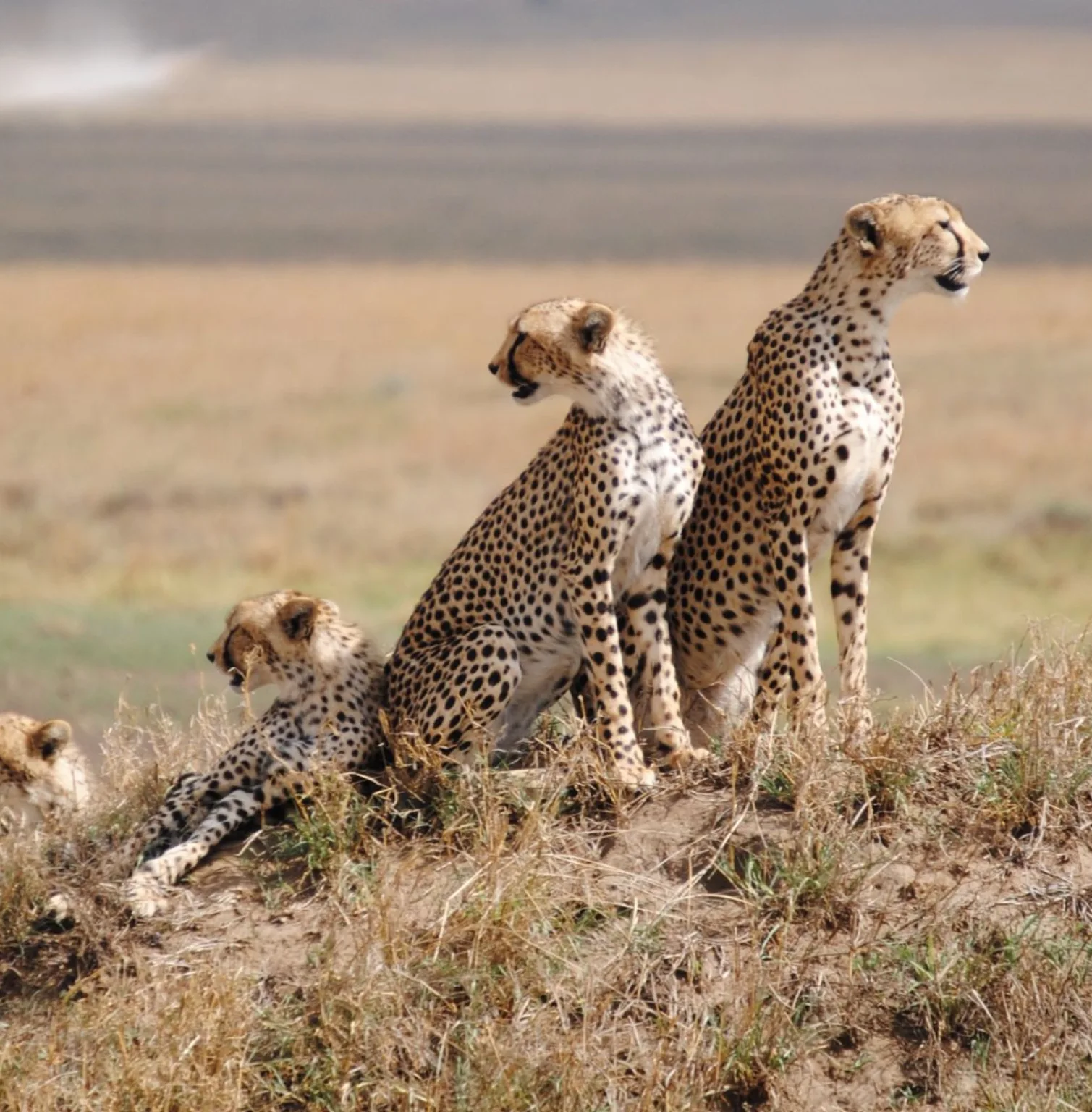
Things to Do at Serengeti National Park
Thrill seekers and ecotourists are welcome at Serengeti National Park, a hive of activity known for its abundant species and stunning scenery. Every traveller can find what they’re looking for in Africa, whether it’s breathtaking savannah scenery or exciting encounters with the Big Five.
Witness the Great Migration
Watch millions of wildebeest and zebras traverse the Serengeti in search of fresh grazing lands. The river crossings at Grumeti and Mara bring heart-pounding moments as the herds evade crocodiles and predators. This migration is one of nature’s most dramatic spectacles.
Visit the Olduvai Gorge
Step into the "Cradle of Humankind", where fossils of early human ancestors were discovered. The site showcases artifacts over two million years old, revealing insights into ancient civilizations. A small museum provides a deeper look into the region’s prehistoric significance.
Go on an Air Safari
Soar above the Serengeti at sunrise in a hot air balloon with our Miracle Experience Balloon Safari or Serengeti Balloon Safari. This unforgettable ride offers breathtaking aerial views of the plains, wildlife, and even migration herds, ending with a champagne breakfast in the wilderness.
Explore the Moru Kopjes
Scattered rock formations known as kopjes provide perfect lookout points for lions and leopards. These granite outcrops also feature ancient Maasai rock paintings, giving insight into the region’s cultural past. The Moru Kopjes are among the best places to spot the rare black rhino.
Experience Maasai Culture
Visit a traditional Maasai village, where you can engage with local warriors, watch traditional dances, and learn about their nomadic lifestyle. The Maasai are deeply connected to the Serengeti, coexisting with wildlife while maintaining their centuries-old traditions.
Photography Tours
Capture Serengeti’s breathtaking landscapes, predators in action, and golden sunsets on a guided photography safari. These tours cater to both beginners and professionals, ensuring you get the best shots of the park’s wildlife and scenery.
Night Safaris
Venture into the wilderness after sunset on a guided night drive. Spot leopards, hyenas, and bush babies as they emerge in the cover of darkness. The Serengeti transforms at night, offering a completely different wildlife experience.
Grumeti River
This river is located on the Tanzania side and is famous for its crocodile-infested waters, where wildebeest struggle to cross during the migration. Watch as predators lie in wait, making this crossing one of the most intense scenes of the Great Migration.
Mara River
Located in the northern Serengeti, the Mara River crossings in August and September are among the most dramatic migration moments. Wildebeest take the plunge into strong currents and lurking crocodiles, creating an unforgettable sight.
Seronera
The Seronera Valley is the best year-round wildlife viewing spot in Serengeti. Its permanent water sources attract big cats, elephants, and giraffes, making it a must-visit for safari lovers. The area also has top-rated lodges and campsites.
Serengeti Hippo Pool
Watch large pods of hippos wallowing in muddy waters, grunting and splashing as they cool off. The Retima Hippo Pool is one of the best places to observe these massive creatures up close in their natural habitat.
Serengeti-Mara Ecosystem
This vast cross-border ecosystem connects Serengeti and Maasai Mara, allowing free movement of migrating herds. The diverse landscapes include rolling plains, acacia woodlands, and seasonal rivers, supporting countless predators.
Volcanoes: Ol Doinyo Lengai & Kerimasi
Ol Doinyo Lengai, the only active carbonatite volcano, is considered sacred by the Maasai. Nearby, the Kerimasi Volcano, now extinct, offers stunning hiking trails with panoramic views of the Serengeti.
Camping in Serengeti
Spend the night under Africa’s starlit skies at a campsite or luxury tented camp. Wake up to the sounds of lions roaring in the distance and enjoy an authentic safari experience in the wild.
Bologonja Springs
A remote oasis in the northern Serengeti, Bologonja Springs attracts elephants, giraffes, and antelopes. This lush, green area offers peaceful game viewing away from the crowds.
Lobo Valley
Lobo Valley is one of the least crowded areas of Serengeti, known for its rolling hills, scattered kopjes, and high predator density. Lions and leopards often roam these hills, making it an exciting area for safaris.
Lake Natron
A surreal alkaline lake, Lake Natron is known for its bright red waters and thousands of flamingos. The dramatic scenery, with volcanic backdrops and barren landscapes, makes this a photographer’s dream.
How to Get to Serengeti National Park?
By Air
Most visitors arrive via Kilimanjaro International Airport (JRO) or Arusha Airport (ARK) before taking a domestic flight to one of Serengeti’s seven airstrips, including Seronera, Kogatende, Grumeti, and Lobo. Flights from Nairobi, Zanzibar, and Dar es Salaam also connect directly to Serengeti.
By Road
A 7–8-hour drive from Arusha takes you through the Ngorongoro Conservation Area, offering scenic views and wildlife spotting along the way. Many visitors opt for a combination of road safaris and fly-in options.
4×4 Safari Experience
Open-roof 4×4 safari vehicles are the best way to explore Serengeti, providing unrestricted views of wildlife and landscapes. Professional guides ensure you get close to the action while navigating the vast terrain safely.
Explore the Serengeti and make Memories That Will Last a Lifetime!
Seeing nature’s spectacular display doesn’t have to wait. Prepare to be amazed by the endless beauties of a Serengeti Safari! Get ready to roam, it’s time to go!
Serengeti National Park FAQs
What is Serengeti National Park famous for?
For the Great Movement, the Serengeti is famous all over the world. It is the biggest movement of land mammals ever seen. The Serengeti-Mara region is home to more than 1.5 million wildebeest, 300,000 gazelles, and 200,000 zebras. Big cats like lions and cheetahs follow these animals. The natural event is dramatic and shows how beautiful animals really is.
How do I get to the Serengeti Forest?
You can drive or fly to get to the Serengeti. Most Tanzania safaris to Serengeti begin at Arusha or Kilimanjaro International Airport. From there, people can take cars or small planes to get to the park. There are several airstrips in the Serengeti where flights stop, making it an easy choice for people who want to get there faster.
When does Serengeti National Park open and close?
The gates to the Serengeti are open from 6 AM to 6 PM. To make sure you get to your camp or lodge safely before it gets dark, you should get there before 3:00 PM. Plan in advance to avoid having to wait at the gates.
How much does it cost to get into Serengeti National Park?
Serengeti National Park Fee costs $70.80 a day per person. The price for adults is $82.60 during the busy season. No matter the season, kids ages 5 to 15 pay $23.60 to get in, and kids under 5 get in for free. For your ease, most entry gates will take credit cards.
How long does it take to fly to Serengeti?
It takes anywhere from 1 hour and ten minutes to two hours and forty minutes to fly from Arusha Airport to Serengeti airstrips. You should add about 30 minutes if you are going from Kilimanjaro International Airport. People may be dropped off at different airstrips during these flights.
What kinds of animals can I see in Serengeti National Park?
There is a lot of wildlife in the Serengeti, like the “Big Five”: elephants, buffalo, rhinoceroses, lions, and leopards. Even though you can’t be sure of seeing certain animals, the Serengeti is famous for having a lot of wildlife, like big cats and thousands of animals that moved around during the Great Migration.
Related
Tanzania
Suggested
Packages
Explore our curated Tanzania safari packages designed to turn your dream African adventure into reality. Whether you’re chasing the Great Migration, exploring iconic national parks, or seeking a blend of wildlife and culture, we’ll craft the perfect safari experience just for you. Reach out today and let’s start planning unforgettable memories together!
Tanzania
Suggested Packages
Explore our curated Tanzania safari packages designed to turn your dream African adventure into reality. Whether you’re chasing the Great Migration, exploring iconic national parks, or seeking a blend of wildlife and culture, we’ll craft the perfect safari experience just for you. Reach out today and let’s start planning unforgettable memories together!
Reviews
From lion chases to lazy sunsets, our travelers spill stories that prove East Africa is wilder and warmer than imagined.
4.8
Based on 10+ reviews
